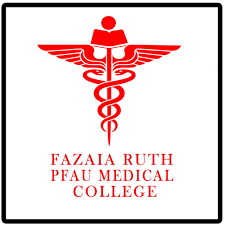

Academic Researcher
Journal of Basic and Clinical Sciences
Volume 01, Issue 02, 2024
An Official Journal of Fazaia Ruth Pfau Medical College, Air University
ISSN: 3008-0495 (Online)
ISSN: 3008-0487 (Print)
Bone Health Crisis: Analyzing Osteoporosis and Bone Loss in the Pakistani Population
Muhammad Asadullah, Faizan Asad, Hira Asad, Rahila Ikram
Acad Res. 2025, 2 (2): 85-91
DOI: https://doi.org/10.70349/ar.v2i1.34
Abstract
Objective:
This study evaluates bone mineral density (BMD) and osteoporosis prevalence
among individuals in Karachi, Pakistan, using dual-energy X-ray absorptiometry (DEXA).
Method:
A cross-sectional study was conducted at Jinnah Postgraduate Medical Centre
(JPMC), Karachi, involving 350 participants aged 13–96 years. BMD was assessed at the
lumbar spine (A/P-L/S) and hip regions using DEXA. T-scores were interpreted according to
WHO criteria. Data were analyzed using SPSS v.22.
Results:
The mean age was 50.59 ± 14.71 years. Of the total, 89.7% were female and 10.3%
male. In the lumbar spine, 24.9% had osteoporosis (T-score ≤ -2.5), 38% had osteopenia (-2.5
< T < -1.0), and 37.1% had normal BMD (T ≥ -1.0). At the hip, 5.7% had osteoporosis, 24%
had osteopenia, and 70.3% had normal BMD. The highest prevalence of low BMD was
observed in the 51–60-year age group. Notably, males showed a higher-than-expected rate of
osteopenia and osteoporosis, particularly in the lumbar spine.
Conclusion:
A significant proportion of the studied population, including males, exhibits
reduced BMD, indicating a growing public health concern. These findings underscore the
need for early screening, targeted interventions, and nationwide surveillance of bone health in
Pakistan.
Keywords
Bone health, bone mineral density, densitometric measurements, osteoporosis, DEXA scan.








